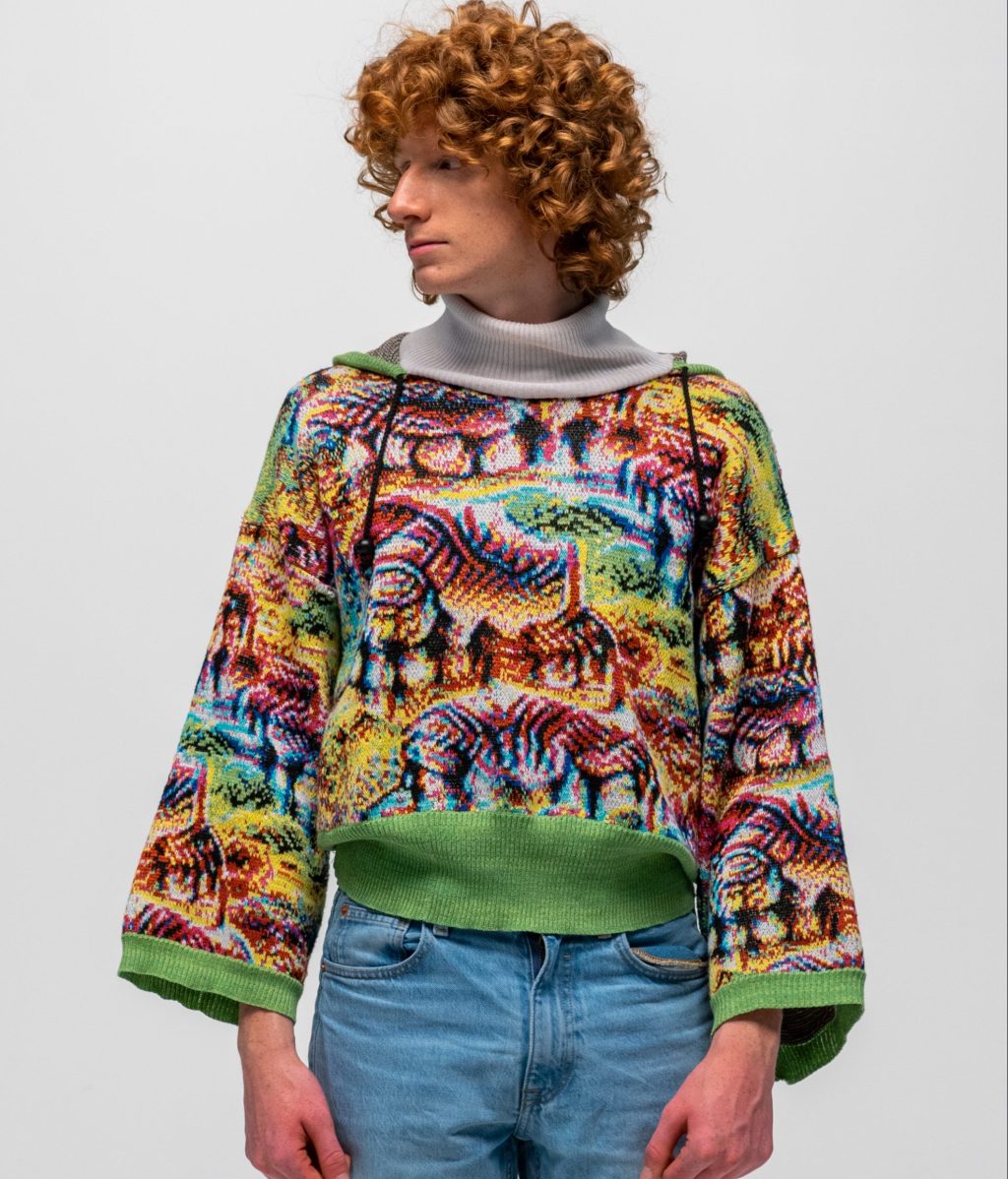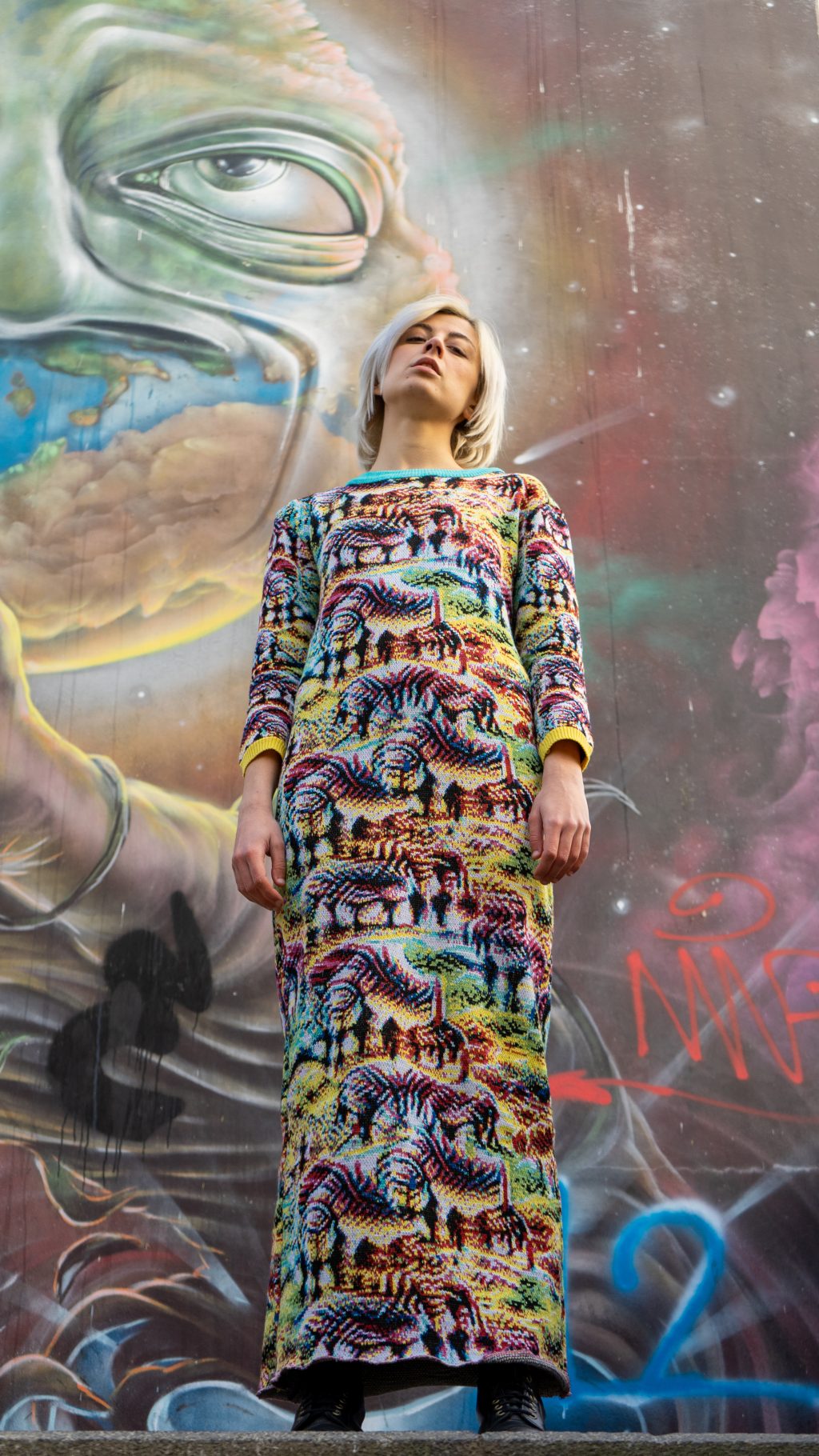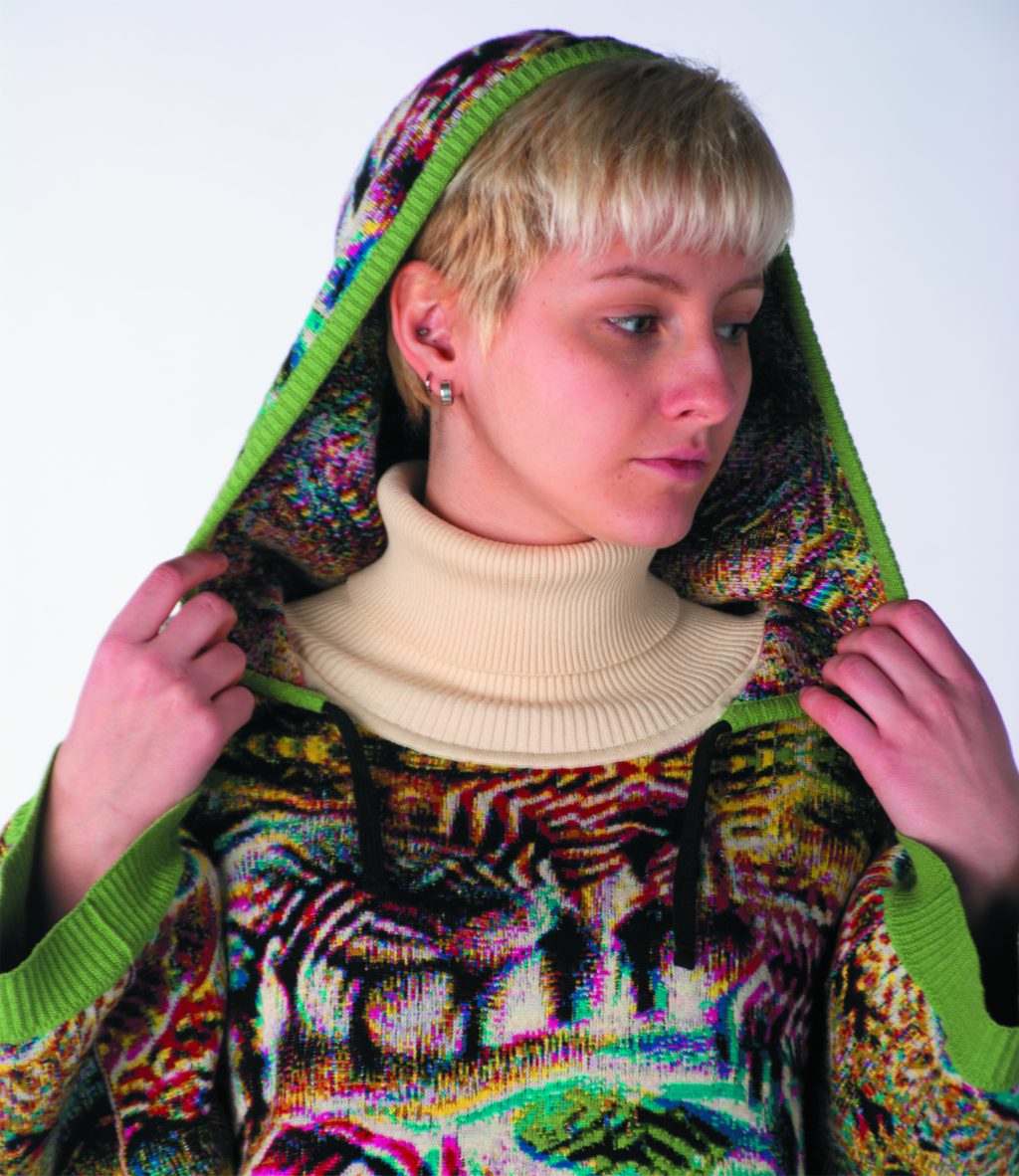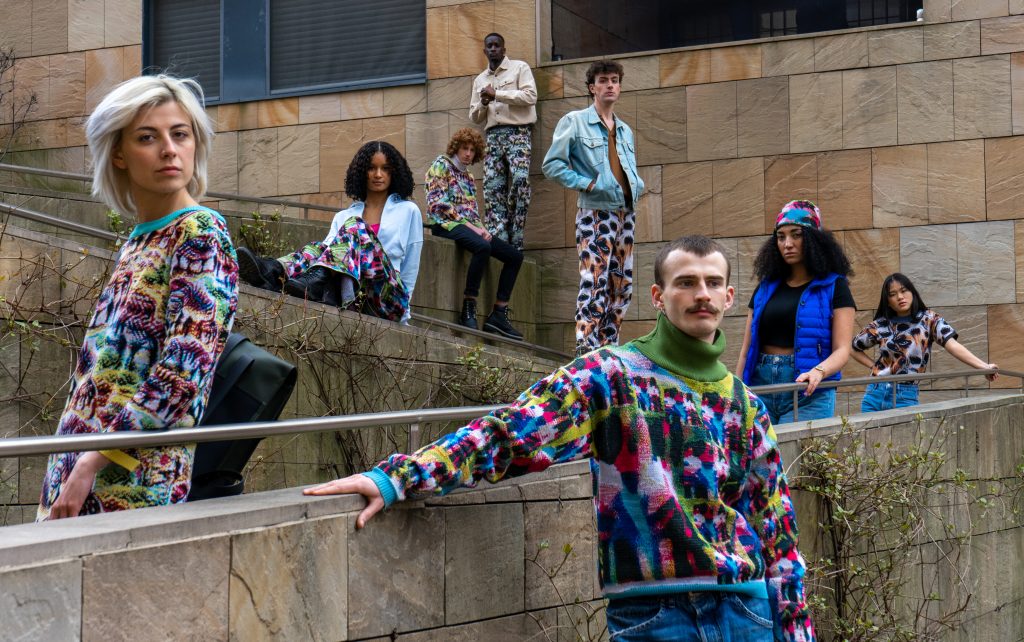From Pixel to Stitch: Meet Capable, a Brand Working Against Facial Recognition
As the world tackles with new, innovative technologies – from the Metaverse to AI to new realities – there are those who take a critical eye to this seemingly glam tech. Enter Rachele Didero and Frederica Busani, the two co-founders of Capable Clothing. Based between Boston and Milan, Capable Clothing tackles an important issue: just how far is too far with new technology?
Capable is all about making clothes that confuse facial recognition, and for a good reason. Didero and Busani want to make an aesthetic statement: that everyone should have the choice to say ‘yes’ or ‘no’ to facial recognition that is seemingly everywhere, from the streets to stores to our phones. Turning pixels into stitches, Capable’s knitwear pieces are revolutionizing what it means to wear a statement. These prints are fun, colorful, and quirky – a move by Capable to bridge the seemingly intractable gap between aesthetics, fashion, and technology.
We spoke with Frederica to learn about Capable, their methodology, and what it means to truly have a choice in your daily life.
What were your motivations, inspirations, and ideas in starting Capable?
Frederica Busani: So Rachele and I, the two co-founders of Capable, are technology enthusiasts. We have been in contact with the world of design, technology, and startups. With all of these experiences, you realize how many great things technology can enable. A super obvious reference is generative AI and all that is coming with it right now. However, we also have to realize that it cannot go unregulated. We have seen in the past that technology usually goes much, much faster than regulation and any ethical thought around it. This can harm people, their freedom, and the way they live in the world.
This is exactly what happens with facial recognition. We both realized, Rachele first and I afterwards—dragged a bit by her thoughts on this—that it is necessary to at least have the possibility to make a choice. Facial recognition is something that happens to us every day, to different extents, of course, in different parts of the world. But in most countries, it is something that is used without us even knowing it. And not only that we don’t know it, but even if we know, we don’t have a choice to opt in or out: these cameras are placed in public spaces or in private places open to the public.
This idea of choice is what sparked the idea of Capable—using something that we have to use everyday, our clothing, to enable people to make the choice. Yes, I want to give my data. No, I don’t want to give my data. The collection we launched, the Manifesto collection, and all our future projects are going to be made around this central purpose: sparking and starting discussions about the limitations that these technologies have, raising awareness so that one day we can use this technology without worry or without stopping the technology altogether. The point is using it wisely.


How do you go about making these prints, studying this technology and understanding how to counteract it? It seems quite challenging to be able to understand the mechanics of a facial recognition software to then produce a print that renders it incorrect.
Frederica Busani: We’re at the very beginning of this research. We start from adversarial digital traces. So there are patches, images that digitally, when they’re placed next to the face of a person in an image, and when run through the facial recognition system, the person is not recognized anymore as a person. We start from these images that already exist. We’re working with some engineers supported by both the Polytechnic of Milan and MIT in Boston, where Rachele is, to find a way to produce these images faster and faster, so that we can update our garments in the most efficient ways possible.
Starting from these images, what we do—and what we patented—is the process to transform them into a functioning textile, an adversarial textile that would maintain this ability to confuse the AI, but in 3D. You need to imagine every pixel becomes a stitch in the garment. For now it’s knitted garments with knitting machines, nothing you can do by hand, where one pixel becomes one stitch. From there, there’s another level, which is designing the garment. Not every pattern works with every model, like every shape of the clothing. So, the second step is to understand where to place the pattern compared to the face. In the future, with all of these projects, the idea is to make all of this process much, much easier and faster. By also developing models on how to design and develop it’s been a lot of testing in different environments. More light, less light. We’ve done a lot of tests. This is the process more or less.
When fashion is so aesthetics based, how do you balance keeping garments what we would consider ‘fashionable’ or following a traditional fashion standard? Or do you even want to follow that standard in producing these garments? When someone sees someone wearing a piece by Capable, the first thing that comes to their mind is not ‘Oh, this is challenging facial recognition.’ They’re most likely thinking that the print and pattern looks interesting and bold. How do you balance the aesthetics, the social cause, and the technology all in one?
Frederica Busani: It is a super hard balance 100%. For now, the manifesto collection is this colorful because of the patches, the ones we decided to use are very colorful. Also, we wanted to present this visual contrast between being not recognized by the camera, but very, very recognizable when you walk on the streets. We thought it was a good way to express our goals; plus, you put our garments on to be recognized in a different way—I guess robbing a bank with them would be quite challenging because they’re so bright.
For us, designing is also very important because we need to be able to reach the largest possible audience. Not everyone is comfortable with wearing a lot of colors or patterns. Part of our research is centered around having less colors, having patterns that are a little less heavy. In the end, though, we are designers, we are a design company with our design brand. So we will always try to make something special. I don’t want to say that we want to be trendsetters, but I think any brand wants to have their own style. And for now, this is ours. Of course, in the future, we need to adjust our designs a bit to the taste of most people—our aim is not just to stay niche.



The fields of AI and surveillance are moving so, so quickly. Have you found that it’s hard to keep up? That facial recognition is getting so good that it surpasses the garments? How do you stay even with a tech world that is investing billions into this technology, all while you’re trying to show another side to it?
Frederica Busani: We definitely realize that what we do might be outdated in a year, not even. The AI updates itself, new systems emerge. That’s why we wanted to partner with MIT because they are among the ones that really are on top of these issues, and can really help us find a way to be future proof. I cannot disclose much of the research that we’re doing at the moment. But the key is to have the garments stay updated.

Capable defines itself as “cultural and technological avant garde.” Walk me through what the phrase necessarily means for you and Capable’s ethos.
Frederica Busani: So for now, what we want to be and the people we want to talk to, is this avant garde that is nothing else than people that want to speak up.
The Manifesto collection is called Manifesto because it’s the way we want to be in the world and say ‘All very cool, but how about the fact that these technologies are so inaccurate and discriminatory? Has anyone thought about it?’ It takes courage to do that. Nobody can deny that these technologies are also helpful; it takes courage to pressure double thinking, questioning. We want to be the courageous people that take this mission to the world. The avant garde, in that sense, is about being the first ones, pioneers, to work counter in this way. But hopefully the avant garde becomes the mass and changes things. That’s our idea and how we interpret that phrase.
You’ve alluded to this a bit in wanting to grow Capable from avant garde to the mass—what do you see the future of Capable being in the next few months and years? What’s in the works?
Frederica Busani: In the short and medium term, the idea is to launch more varied products. Different kinds of textiles to make our garments, maybe suited for warmer climates and a little cheaper. We’re also tring to tap into different kinds of target points. In the longer term, we envision Capable being not only a brand itself, but also a company that can license such technology to brands that want to do adversarial collections.
Everybody now is doing sustainable collections. Otherwise you’re out of place, right? In 2023, you need to have sustainable garments. Our vision is to have adversarial collections just be like the push for sustainability. To have brands that, in 2025 or 2030, have an adversarial collection—at the end of the day you need to give a choice to protect yourself from these cameras. We definitely would like to give our technology out. Right now, though, we need to keep it internal until we develop it to a point where we’re happy. Then the idea is to license it and give it to various brands.